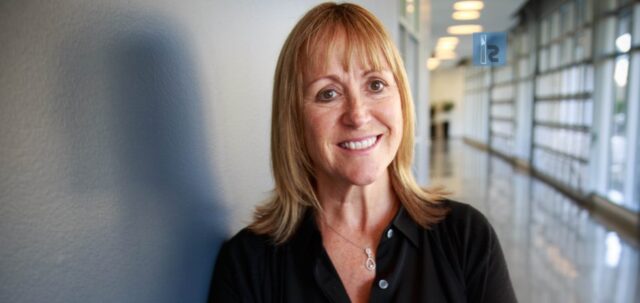Yes, Sir Martin Narey, Prison Rehabilitation can Work and I can Prove It
Originally published Nov. 6, 2019 on LinkedIn Pulse
The Guardian recently reported that Sir Martin Narey, a former director general of the Prison Service of England and Wales, had stated that prison rehabilitation does not work and that we should be “particularly suspicious” of those who promise it. This is his experience. My experience is vastly different and offers a more hopeful path forward for proponents of criminal justice reform.
I am the CEO of Televerde, a U.S.-based company that is born in purpose. While volunteering for a prison ministries program, our founder saw an opportunity to help women build business skills while serving their sentences. He believed this would lead to productive career opportunities upon their release.
Our company officially launched in 1994 with a six-person call center running out of a trailer at an Arizona prison. The model was simple: hire, train and compensate this community through on-the-job experience.
Since our inception, we’ve continued to grow and evolve, staffing today a 650+ global workforce. We operate nine call centers, six of which are staffed entirely by females incarcerated inside three U.S. prison facilities.
More than 3,000 women have been through our program with less than 5.5 percent recidivism compared to our national average of 68 percent. Ninety-four percent of our ladies secure meaningful employment within one year of release versus 54 percent nationally. And after five years, the average salary our ladies earn is three times greater than those who did not go through our program. (We recently commissioned a Seidman Study from Arizona State University to measure the full economic and social impact of our model. We expect to release these results in January 2020.)
Our model works because of the deep investment we make in our ladies to prepare them for today’s digital marketplace. They are trained in the basics of sales and marketing and certified in technologies such as Marketo, Salesforce and Eloqua. This level of knowledge increases their employability on the outside.
We place equal value on teaching soft skills. Women learn how to close deals, work individually and as part of a team, manage conflict, problem solve, navigate change, communicate with senior executives, and collaborate with clients’ sales and marketing teams. This combination of learning enables them to gain professional experience in prison while building their careers and networks as they partner with the world’s top Fortune 500 companies.
Perhaps most important, our ladies begin to feel—some for the very first time—financial and emotional independence, which contributes greatly to their rehabilitation and prepares them for a successful transition back into their communities.
Following release, many of our ladies are hired directly by our clients, filling top sales and marketing positions and high-demand technical roles. At our company headquarters, 40 percent of our workforce began their careers on the inside. They are in every department and in every level of the organization, including the c-suite.
The results to date are impressive. In addition to our low recidivism rate, our model has generated more than $8B in revenue for clients and $25 million in annual cost savings for Arizona taxpayers.
What we’ve learned at Televerde is that in order for a prison rehabilitation program to be successful, we need to ensure that the trades and skills we teach women and men are in demand on the outside. As joblessness is the No. 1 predictor of recidivism, we must also commit to help them find career opportunity once they reenter society. This last part is especially challenging in the U.S. because of barriers like the felon box, which make it difficult for those who have been incarcerated to find meaningful employment. It’s also a reason we launched Arouet Foundation in 2011, a non-profit organization that works with our ladies to help them successfully transition and find jobs.
I have two purposes in writing this op-ed. The first is to share our Televerde model as an example of successful prison rehabilitation (or criminal justice reform). The second is to caution those with public platforms from making statements that minimize the ability of the prison community to transform while incarcerated.
While there is overwhelming support in favor of criminal justice reform, many still have doubts as to whether or not this population can be adequately rehabilitated. We need not stoke the flames of fear, uncertainty and doubt because it places additional burdens and challenges on a community that, quite frankly, is already carrying their fair share.
We must also remember that failing to deliver a successful prison rehabilitation program does not mean it can never be done, as I’ve shown with our Televerde model. Perhaps instead we can view the experience as an opportunity to evaluate the way it was implemented to see if and where we could have made deeper investments and improved the outcomes.

